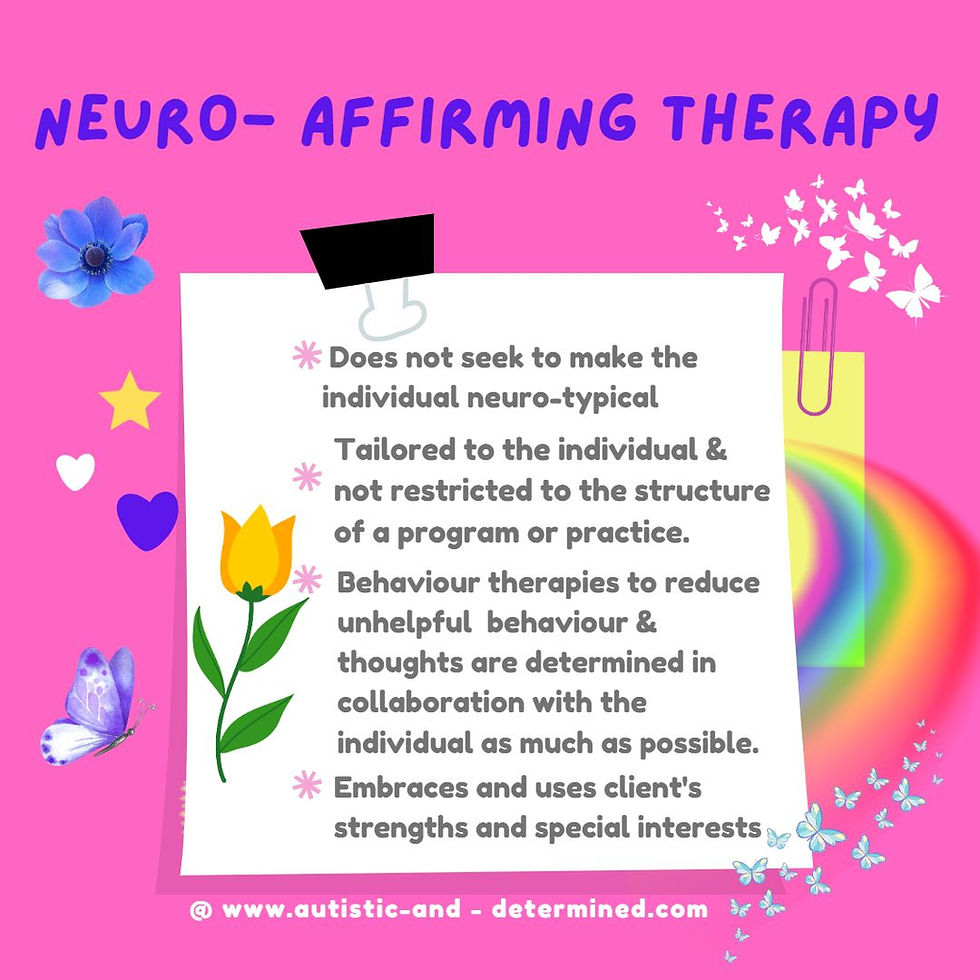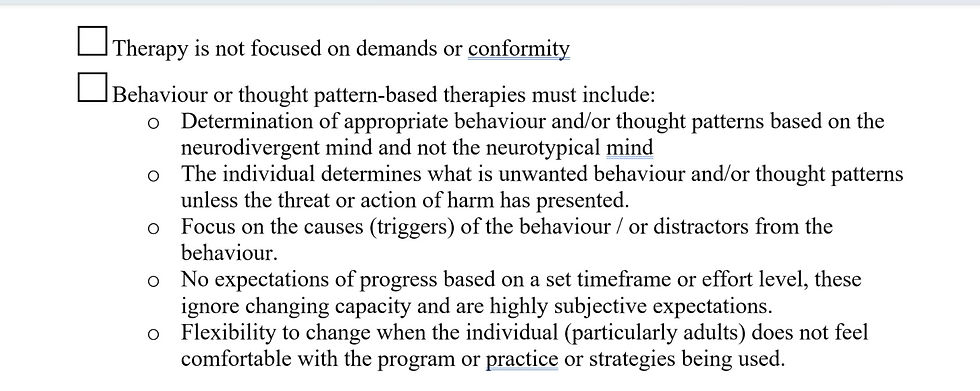My journey and what I learnt about therapy.
One of the biggest lessons I have learnt on my journey as an autistic parent is how to advocate with therapists, teachers and caregivers to provide the right therapy and support for my children. This therapy is known as neuro-affirming therapy and seeks to nurture and support the neuro-divergent individual in line with their own goals, strengths and interests. It does not seek to make the individual neuro-typical nor does it teach them to mimic neuro-typical behaviours that take away the strengths and differences that make them such an asset to society.
In the early years of understanding neuro-divergence, it is usually difficult to determine the difference between neuro-typical and neuro-divergent actions, thoughts and behaviours. Many of us were raised to conform to neuro-typical traits through criticism, discipline and isolation. Some of us are even so good at mimicking neuro-typical traits to prevent this criticism, discipline and isolation, that we forget what is learnt and what is natural to us. We just know at the end of the day we are exhausted and feel like we have been on high alert for a long period of time. It can be quite a process if you are late -diagnosis to (1) determine what behaviours are unnecessary and unhelpful and (2) to stop masking by using these behaviours. It is therefore very important that we try to ensure that the therapy provided to neuro-divergent people is not seeking to teach them to mask and act in neuro-typical ways just to make the rest of society feel more comfortable.
When my children were first diagnosed, I had a very limited understanding of autism and neuro-divergence. I did not know that the struggles I faced all my life were because I was neuro-divergent and was forced to mask neurotypical behaviours, actions and thoughts. During the first two years of our therapy journey, I relied very heavily on the therapists to tell me what my children needed and how we would get them there. As time went on and I learnt more about neurodivergence I realised that a lot of the therapy we received whilst good was not always exactly what we needed and was not always neuro-affirming. In the 4 years since then, I have made it my mission to understand the available therapies and have as much input into my therapy and the therapy offered to my child as possible. This has been an exhausting process, so I would like to share some of our stories with you to hopefully make the task easier for you.

The fundamentals of neuro-affirming therapy
There are 4 fundamentals that all good quality neuro-affirming therapy will feature. They are:
1. The therapy does not seek to make the individual neuro-typical
a. Therapy accepts all forms of communication, play and social interaction
b. Therapy allows the child to stim, move and fidget.
c. Therapy allows for sensory input or reduction when needed.
d. Therapy allows enough flexibility to change with the child’s needs but enough structure to ensure the sessions are supporting the development and increased independence
e. Therapy is focused on increased self-advocacy and independence over time
f. Therapy seeks to educate or change the environment or supports provided to fit the individual, rather than change the individual to fit the environment and supports offered.
2. Behaviour or thought-based therapies to reduce unhelpful or inappropriate behaviour and thoughts must be practical and determined in collaboration with the individual as much as possible.
a. Collaborative partnerships should be the basis of all behaviour therapy not positive behaviour support as many neurodivergent brains do not work well with programs based on isolation, removal of items or rewards.
b. Judgement of what is unwanted behaviour should be determined by the individual unless that behaviour is harming the individual or someone else – it should not be a way of making an individual neuro-typical.
c. No therapies that seek to change a behaviour or thought pattern without addressing why the behaviour or thought patterns exist.
i. These forms of therapy need to determine the cause of the behaviour and/or thought pattern and address it there.
ii. If an individual is not at the place where the causes of behaviour or thoughts can be addressed, then the expected response is a distraction away from the behaviour or thoughts. Behaviour and thoughts cannot be reduced without acknowledging the cause.
d. Therapy should be practical and attainable for the individual within their capacity and the capacity of the supports they have available.
e. Therapies for behaviour and thought patterns need to be non-judgemental and not bound by expected progress time frames.
f. These therapists need to listen to individuals when they say this isn’t working for me, my brain doesn’t work this way, can we try something else.
g. These therapists need to be mindful and considerate of the changing nature of an individual’s capacity to use strategies and things learnt in therapy. See spoon and cup therapy and how it affects functioning.
3. The therapy is tailored to the individual and is not restricted to the structure and format of a program or practice being used.
a. Programs and practices can be rigid and the determination for the success of these programs and practices can be just as rigid.
i. For example, programs that determine mastery of a skill based on the successful completion of this skill 10 times in a row, often ignore the individual’s capacity to willingly cooperate in such a repetitive and demanding manner. Proof of mastery of a skill should be tailored to the individual.
b. Certain programs and practices like ABA and CBT can be traumatising to neuro-divergent individuals because of their rigidity and demands for conformity.
4. The therapy plan is created based on the individual’s goals, strengths and interests.
a. An effective therapy plan will focus on an individual’s strengths and motivations to increase development and independence as these traits are responsible for getting the individual to their current level of development and independence.
So based on these 4 features, how can you determine if a therapy, therapy service or therapist is (a) neuro-affirming and (b) the right fit for you or your family.
Questions you can ask.
1. Do you use a particular therapy program or practice in your therapy?
2. Do you tailor your therapy plans for the individual? Can you give me examples of how you tailor your therapy program to the individual?
3. Will you allow my child to stim, fidget or move during therapy?
4. How will you determine:
a. The appropriate goals for the therapy plan?
b. The success of the therapy plan?
c. The expected progress rate of the therapy?
d. The individual’s capacity for planned therapies?
Neuro-affirming therapy checklist



As always my hope is that this will in someway be helpful for you.
A&D
.png)
Comments